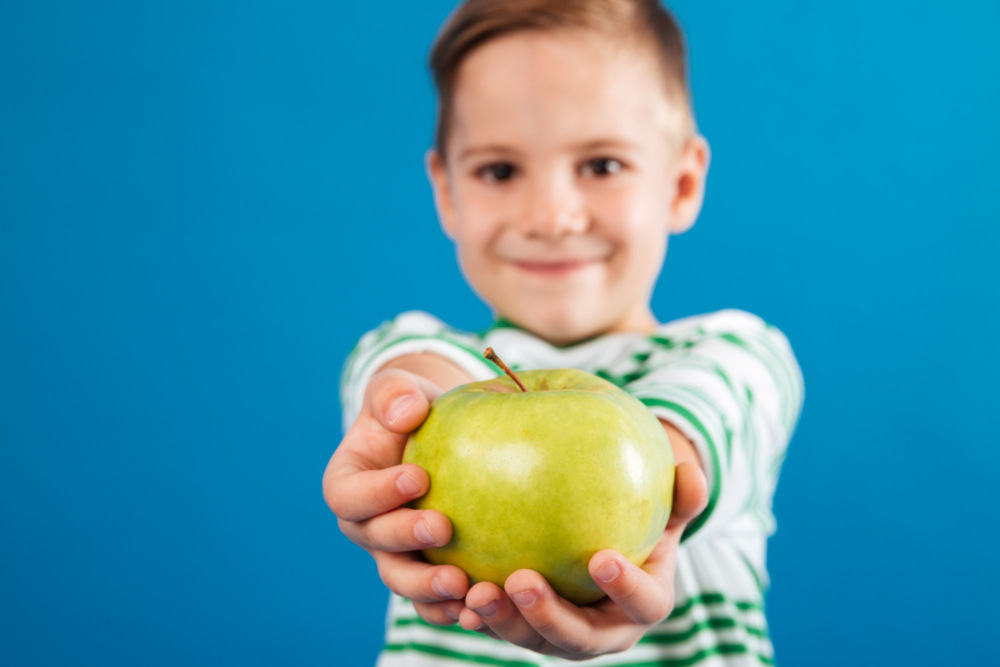
VISITING HOURS:
Week Days - 9 am to 8 pmSundays - Only Emergency Cases
The Best and Worst Foods for Your Child's Teeth
A child’s smile is a blend of innocence and mischief, yet maintaining the health of those little pearly whites demands sincere attention and care. Balancing their diet with tooth-friendly foods while avoiding potential dental culprits is a formidable challenge parents face. Understanding the best and worst foods for your child's teeth will help you. Gaining insights from various dental experts, this article explores the universe of foods that favor and threaten the oral health of our children.
Best Foods: Building Strong, Healthy Smiles
Here are some best foods you should feed your child to help with dental health:
Cheese and Dairy Products
A child’s laughter can melt hearts, and to keep that laughter echoing, cheese and other dairy products like milk and yogurt play a crucial role. Being rich in calcium, they strengthen teeth and ensure the development of a robust dental structure, as various studies and dental websites like ICTeeth and Dentist Just for Kids have affirmed.
Crunchy Fruits and Vegetables
Crunching on apples, carrots, and celery not only stimulates the gums but also acts as a natural cleanser, brushing away loose food particles and bacteria. Fox Kids Dentistry emphasizes the ability of these foods to promote salivation, which naturally neutralizes the acidic environment that encourages cavities.
Nuts and Seeds
Nuts and seeds, especially almonds, are calcium and protein-packed goodies that shield the teeth without adding harmful sugars. This makes them a pocket-friendly and tooth-friendly snack for kids that ensures the well-being of their little chompers.
Foods You Should Avoid to Maintain Your Child’s Dental Health
Some foods may cause cavities in children’s health. Here are some of them:
Sugary Beverages and Snacks
There is a unanimous consensus among dental experts, including those from Sutherland Dental and Kids Stop Dentistry, that sugary beverages and snacks are primary villains when it comes to dental health. Sugars feed the harmful bacteria in the mouth, leading to acid production and, subsequently, to cavities.
Sticky and Chewy Foods
Beloved by many children, sticky and chewy foods like gummy bears and dried fruits can be particularly damaging. They tend to linger on the teeth longer, providing a prolonged sugar feast for bacteria, and often result in a tougher cleaning job for saliva and toothbrushes alike.
Acidic Foods
Acidic foods, such as citrus fruits and tomatoes, though healthy, can erode enamel if consumed in excess or without being paired with other non-acidic foods. As Oral B suggests, incorporating these items into larger meals where they can be neutralized by other foods can mitigate their potential harm.
Read to Know: Why Good Nutrition is Necessary for Healthy Teeth?
Incorporating Healthy Eating Habits: A Practical Approach
Creating a child-friendly diet that caters to their dental health necessitates both smart choices and strategic planning:
Implementing a Balanced Diet
Offer a variety of foods from the five major food groups: fruits, vegetables, dairy, grains, and protein, ensuring an equilibrium that fosters optimal dental and overall health.
Educate and Engage
Educating and involving children in discussions and decisions about their oral health can instill a sense of responsibility and make them more amenable to adopting healthy eating habits.
Creative Culinary Adventures
Crafting meals that are both nutritious and exciting can alleviate some of the resistance to healthy foods. Integrating tooth-friendly ingredients into fun, visually appealing dishes can make the dining experience more enticing for children.
Promoting Dental Hygiene: Beyond Dietary Measures
While understanding the best and worst foods for your child's teeth will help you is critical, integrating a comprehensive dental hygiene routine is equally pivotal. The confluence of a wholesome diet and stringent dental hygiene practices can sculpt a path for unblemished oral health in children. Let’s delve deeper into the elements that can fortify our kids against dental dilemmas:
Routine Dental Check-Ups
Regular visits to the pediatric dentist serve as a preventive shield against potential oral health issues. These check-ups facilitate the early detection of cavities, misalignments, and gum diseases and establish a roadmap for any necessary interventions or adjustments in daily dental care practices.
Dental anxiety is not uncommon among children. Preparing your child for what to expect during dental visits and potentially utilizing playful pretend dentist games at home can alleviate some of their apprehensions. Selecting a pediatric dentist who is adept at handling children’s fears and turning the check-ups into a positive experience is crucial in shaping their future attitude towards dental care.
Brushing and Flossing
Parents are the first mentors in a child’s journey towards maintaining oral hygiene. It is indispensable to teach them the right techniques of brushing and flossing. Ensure they learn about gentle yet thorough brushing, reaching every nook and cranny of their mouth, and adopting flossing as a regular practice to eliminate interdental debris. Making this learning curve fun through playful toothbrushes or a “brushing dance” can make the routine less monotonous and more engaging for kids.
Use of Fluoride Toothpaste
Fluoride is renowned for its enamel-strengthening and cavity-fighting properties. Introducing children to fluoride toothpaste in age-appropriate amounts can bestow additional protection against decay and cavities. It’s pertinent to teach them the pea-sized amount sufficiency and the importance of spitting out the toothpaste post-brushing to prevent fluoride ingestion.
Protective Sealants
Dental sealants are a preventive strategy to safeguard the groovy and pitted surfaces of the teeth, especially the molars, where food particles are more likely to accumulate. Discussing with your pediatric dentist about the appropriate age and need for sealants can be a step toward additional cavity prevention.
Read to know: What Happens When Cavities Go Untreated?
Ensuring a Safe Playing Environment
Facilitating a safe play environment, especially in sports that pose a risk to dental health, is often overlooked. Implementing the use of mouthguards during high-impact sports activities can prevent potential injuries, safeguarding those tiny teeth from unforeseen accidents.
Empathy and Encouragement
Aligning ourselves empathetically to our child’s dental struggles and fears and providing encouragement and rewards for their adherence to dental hygiene practices can cultivate a positive and responsible outlook toward oral health. Being their cheerleader in this journey ensures they feel supported and valued.
Conclusion
This article describes the best and worst foods for your child's teeth. In the journey to preserve our children’s adorable smiles, a balanced approach encompassing a healthy diet and a meticulous dental hygiene regimen is indispensable. By spotlighting the champions and adversaries of oral health in their diet while not neglecting the importance of regular dental care routines, we can foster a foundation for a lifetime of strong, healthy teeth. Therefore, the secret to those enchanting smiles lies not just in the joy they exude but also in the mindful practices we adopt to safeguard them.
Feel free to contact us for your queries regarding your child's dental health.
OUR
TREATMENTS
TREATMENTS








